1199 Settler viruses & wild salmon
Not on My Watch: How a Renegade Whale Biologist Took on Governments and Industry to Save Wild Salmon
by Alexandra Morton
Toronto: Penguin Random House Canada (Vintage Canada), 2021
$35.00 / 9780735279667
Reviewed by Stephen Bocking
*
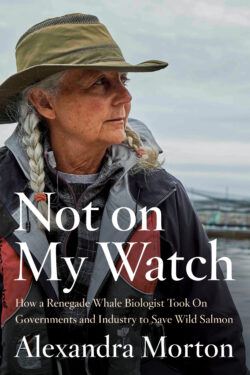 In the late 1980s Alexandra Morton encountered the first signs that salmon farms, newcomers to the Broughton Archipelago, were affecting local wild salmon. Not on My Watch recounts her response — as a resident, scientist, and committed, obsessive activist — to this industry’s “invasion” of the region.
In the late 1980s Alexandra Morton encountered the first signs that salmon farms, newcomers to the Broughton Archipelago, were affecting local wild salmon. Not on My Watch recounts her response — as a resident, scientist, and committed, obsessive activist — to this industry’s “invasion” of the region.
Morton had known even as a child that she would do science. Inspired by Jane Goodall, she set out to learn the language of orcas, aspiring to “end the solitude of my species.” Orky and Corky, captive in Marineland of the Pacific near Los Angeles, were her first teachers. But she soon decided orcas had to be studied in their own habitat, and so she looked for Corky’s family in British Columbia. In 1984 she followed an orca matriarch into the Broughton. Echo Bay became home.
Over the years, Morton learned how species in this region relate to each other and their environment. The essential nature of salmon stood out: sustaining eagles and other predators as they swim out to sea, feeding bears and orcas when they return to spawn, and providing people with food for the winter.
Understanding the Broughton required long observation and novel experimental methods. Doing science also required finding other experts with whom she could collaborate. Above all, as she gradually realized, it was necessary to gain permission from local Indigenous people to study in their territories. Billy Proctor and other neighbours shared their knowledge of the region, their memories, and their observations of how salmon farms clashed with local places and species. Eventually, her home became the Salmon Coast Field Station; it now hosts university scientists, students, and other researchers.
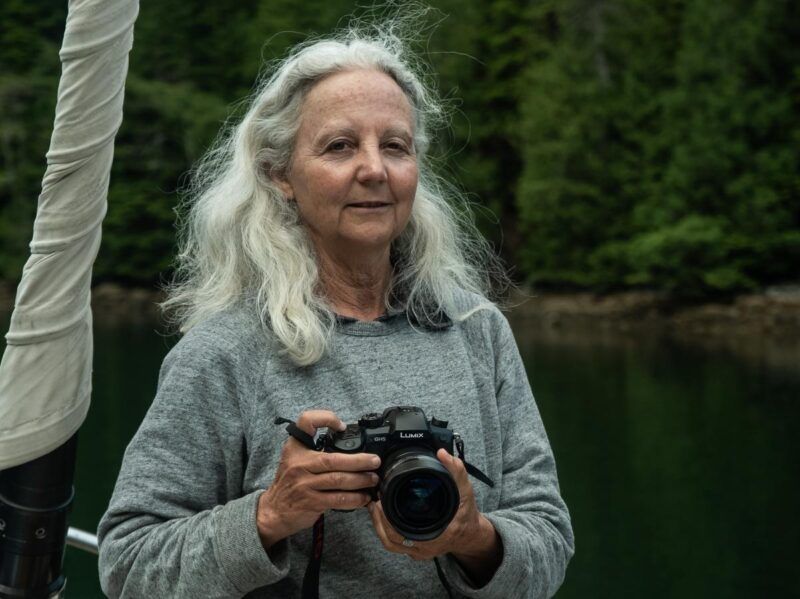
Through this research it became clear that salmon farms had lodged in the Broughton’s “vital organs.” Ironically, she had at first welcomed them. But they displaced wild salmon, and their crowded pens incubated disease. Within a few years whales had vanished, algae blooms were common, and farm operators were shooting seals and sea lions. Some signs of distress were as obvious as the boils that scarred wild salmon. Other signs emerged only through analysis. In 1991 furunculosis spread from farm to farm. A decade later escaped Atlantic salmon showed they had learned to eat wild fish: a step towards colonization by this “exotic” species. The community of Echo Bay itself was extinguished — the outcome of an apparent policy of clearance.
Then came sea lice. In 2001 Morton learned from local fishers that this parasite was proliferating on salmon. Scientists in Norway and Scotland (who had already experienced this phenomenon) advised her of the threat they presented. Viruses were next, accompanying the industry as it spread up the coast — echoing the smallpox Europeans had brought centuries earlier. The central role that both sea lice and viruses would eventually play in this history testifies to how the most critical components of an ecosystem can sometimes be those most easily overlooked.
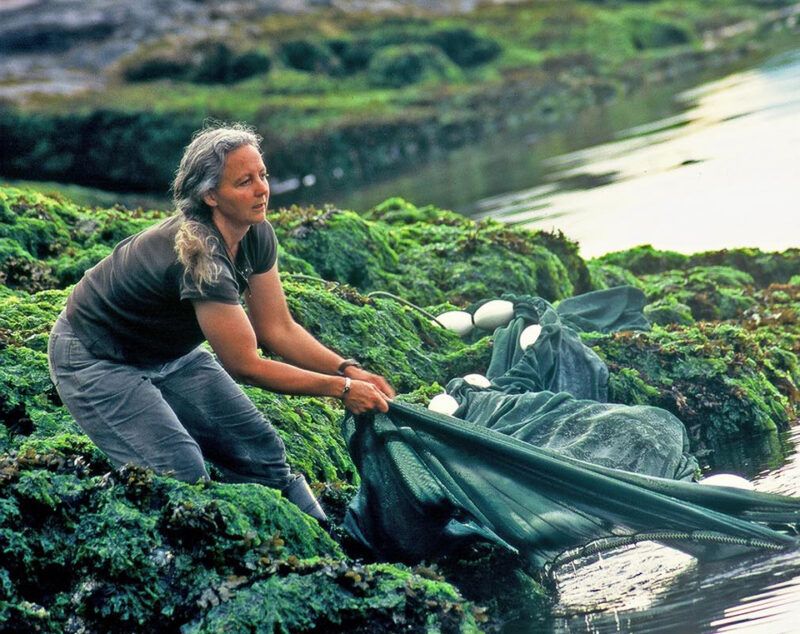
Sea lice and viruses — both evident wherever large-scale salmon farming took place – also epitomized how the Broughton had become merely one episode in a larger story of coastal industrialization. In British Columbia and on Canada’s east coast the industry exhibited parallel ecological and economic histories. Washington State, which banned farms from wild salmon habitat, showed what could be done. Morton saw in Norway — the industry’s “mother country” — a possible future for British Columbia, with wild salmon sacrificed to make way for the industry, or managed so intensively that they hardly remained “wild.”
Morton paired her scientific perspective with a political analysis. The problem for salmon, she concluded, was that government — the supposed protector of the public interest – was broken. The province allowed farms where local people knew they didn’t belong. The federal Department of Fisheries and Oceans (DFO) had become deaf to the reports of its own field staff, resisting evidence of disease, more concerned with defending the farms than protecting wild salmon. The Canadian Food Inspection Service seemed to see disease as a public relations problem. The RCMP masqueraded as an armed escort service for the industry.
She also learned about the politics of science. Government and industry manufactured doubt about the harm caused by the industry, resisting evidence that had been gathered elsewhere, and attempting to exonerate farms by exhibiting dubious evidence of other factors affecting salmon. Kristi Miller, a world leader in salmon and virus research, was denied access to farms and funding. Industry shaped the science: funding was available to study diseases of farmed salmon, but not wild salmon. Too often, Morton concluded, scientists used their positions to justify or hide industrial damage. Above all, secrecy was pervasive — and hence so was the necessity of making information available.
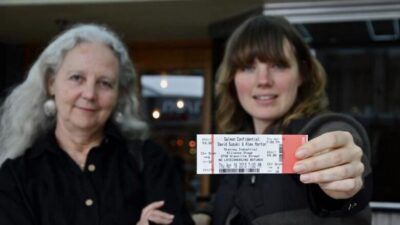
Over the years, Morton’s strategies as an activist evolved. She began with letters detailing evidence of the impacts of the farms, with copies to government, local fishers, environmentalists, and other scientists. When these failed to elicit a response, she turned to research, reasoning that peer-reviewed scientific papers would be more persuasive. She raised money for films made by Twyla Roscovich, documenting their impacts. She marched down Vancouver Island to Victoria, led a rally at the legislature, paddled down the Fraser, and travelled to eastern Canada and Norway.
Her experiments in activism tested ideas about the sites of social change: the negotiating table, courtroom, marketplace, street, and the farms themselves. GoPro cameras became an essential tool, documenting industrial practices, allied with social media so that thousands could now witness events on these once-remote farms. Sea lice, in all their ugliness, became unlikely allies through this new visual language. She combined her roles as scientist and activist: occupying a salmon farm also provided an opportunity to sample viruses — an effective linking of compassion and rigour. A history of how environmental activism has changed over 30 years is embedded in her personal story.
Morton’s struggle climaxed in 2017, with the novel strategy of occupying farms, forcing negotiations between governments and First Nations. She also accepted what she had not at first understood: that First Nations were the essential parties, and she had to step back. Informed by their own history of settler viruses and residential incarceration — paralleling the history of farmed salmon — they could take back the role of stewards of wild salmon.
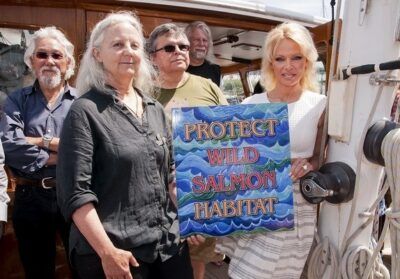
Her watch has seen some victories. In 2012 the Cohen Commission criticized the DFO, noting its failure to study the impacts of farms on migrating salmon, and the requirement of keeping them off the migration routes. In December 2018 an agreement was reached between British Columbia, the federal government, and three First Nations to remove most farms from the Broughton.
But there were many reverses. In 2015 sea lice returned to the Broughton. By 2018 salmon populations were declining across British Columbia, even in the Fraser River. Pink salmon collapsed in 2019. Grizzly bears were starving — casualties of an industry “that has never belonged in these waters.” Viruses continued to spread, enjoying the head start provided by decades of inattention (an unfortunate prelude to Canada’s early failures with Covid). After 30 years of activism Morton was, she feared, witnessing extinction. She concludes by proposing a Department of Wild Salmon that would link salmon, people, and Indigenous and local governments, and use novel science to enable salmon to become “our guide and teacher.”
Morton shows effectively how activism is hard work. Tensions and conflicts can shatter energy and obscure purpose. Stress and burnout are close companions: “sleep is lost, you risk obsession.” She felt grief. The industry even managed to persuade some that Morton was the aggressor, obstructing a kindly and generous job creator.
At one point the conflict becomes farce, when she is stalked by people in boats with blacked-out windows. That it’s impossible to identify them hints at the essential problem for wild salmon: they are in the way of not just one, but many interests — salmon farming, logging, mining, hydropower, fishing, oil, agriculture — in fact, our entire industrial system. They call out for defenders, and as Morton explains, she had no choice but to respond.
*
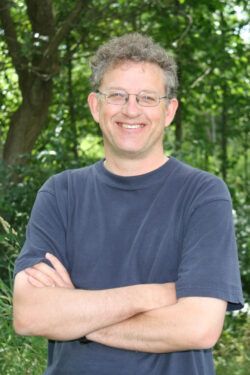
Stephen Bocking has taught environmental history and policy since 1994 at Trent University in Peterborough, Ontario. Before that he worked at the University of British Columbia, York University, and the University of Toronto. He is the author of Nature’s Experts: Science, Politics and the Environment (Rutgers University Press, 2004); Ecologists and Environmental Politics: A History of Contemporary Ecology (Yale University Press, 1997); and Aquatic Science in Canada: A Case Study of Research in the Mackenzie Basin (Royal Society of Canada, 1995). He is also editor of Cold Science: Environmental Knowledge in the North American Arctic during the Cold War (co-edited with Dan Heidt, Routledge, 2019); Ice Blink: Navigating Northern Environmental History (co-edited with Brad Martin, University of Calgary Press, 2017); Urban Explorations: Environmental Histories of the Toronto Region (co-edited with Anders Sandberg, Colin Coates, and Ken Cruikshank, Titles on Demand, 2013); and Biodiversity in Canada: Ecology, Ideas, and Actions (Broadview Press, 2000).
*
The Ormsby Review. More Books. More Reviews. More Often.
Publisher and Editor: Richard Mackie
The Ormsby Review is a journal service for in-depth coverage of B.C. books and authors. The Advisory Board consists of Jean Barman, Wade Davis, Robin Fisher, Cole Harris, Hugh Johnston, Kathy Mezei, Patricia Roy, Maria Tippett, and Graeme Wynn. Scholarly Patron: SFU Graduate Liberal Studies. Honorary Patron: Yosef Wosk. Provincial Government Patron since September 2018: Creative BC
“Only connect.” – E.M. Forster
3 comments on “1199 Settler viruses & wild salmon”
I’m an old-school chum of Alexandra’s late husband, Robin. I’m now an old seafarer (sailboater) in Salem MA . I love what Alexandra is doing and I’d love to connect .
Walter
Thank you for reviewing this book.
I wanted to let readers know it also exists as an audio book with the added element of accurate pronunciations of Indigenous names and places.